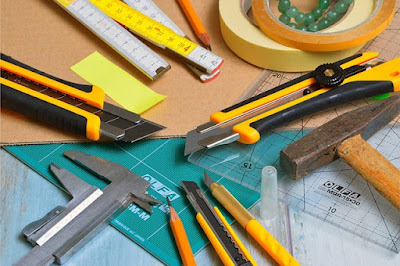Build a Safe & Fun DIY Wooden Playset: 10 Essential Safety Tips
Building a wooden outdoor playset for your kids can be a fun and rewarding project. However, ensuring safety is crucial to avoid accidents and create a space where your children can play worry-free.
In this guide, we’ll explore 10 essential safety tips to keep in mind while constructing a wooden playset. From material selection to assembly techniques, these tips will help you build a safe, durable, and fun outdoor play area.
.jpeg) |
| Watch The Video |
1. Choose the Right Wood
The type of wood you use is critical for the safety and longevity of your playset.
- Pressure-Treated Lumber: Treated wood resists rot, insects, and weather damage.
- Cedar or Redwood: Naturally resistant to decay and splintering.
- Avoid Chemically Treated Wood: Ensure any treated wood is safe for children and doesn’t contain harmful chemicals.
Need help selecting the best materials? Check out this guide to woodworking tools and plans for expert advice.
2. Smooth Out Edges and Surfaces
Splinters and sharp edges can be hazardous to little hands.
- Sand all edges and surfaces thoroughly to eliminate splinters.
- Use a router to round off sharp edges for added safety. Use the Smart Saw for precision cuts and smooth finishes.
3. Anchor the Playset Properly
A stable base is essential to prevent the playset from tipping over.
- Dig holes for the posts and secure them with concrete.
- Follow the manufacturer’s guidelines if using anchor kits.
- Ensure the playset is level, even on uneven ground.
4. Use Weather-Resistant Hardware
The bolts, screws, and fasteners you choose can affect the durability and safety of the playset.
- Opt for galvanized or stainless-steel hardware to prevent rust.
- Double-check that all bolts and screws are tightened securely.
Need affordable yet durable hardware? Browse these essential woodworking tools and supplies.
5. Install Guardrails and Safety Barriers
Prevent falls from elevated platforms by adding guardrails and barriers.
- Install railings on all platforms higher than 18 inches.
- Use vertical slats spaced no more than 4 inches apart to prevent entrapment.
- Ensure slides have handrails at the top for safe entry.
6. Choose Age-Appropriate Features
Design the playset with your child’s age and abilities in mind.
- For toddlers, include low platforms, small slides, and baby swings.
- Older children will enjoy features like monkey bars, rope ladders, and taller slides.
Looking for plans to match your child’s age? Explore woodworking plans tailored to different skill levels.
7. Create a Safe Landing Zone
Falls are inevitable, so it’s important to have a soft surface beneath the playset.
- Use rubber mulch, sand, or wood chips to cushion falls.
- Spread the material at least 6 feet around the playset for adequate coverage.
8. Perform Regular Maintenance
Over time, wear and tear can compromise the safety of your playset.
- Check for loose bolts, screws, or fasteners monthly.
- Sand down any rough spots or splinters that develop.
- Reapply weatherproof sealant every year to protect the wood.
9. Ensure Proper Spacing Between Features
Crowding playset elements too closely can increase the risk of accidents.
- Leave at least 3 feet of clearance between swings, slides, and climbing features.
- Ensure there’s enough space for children to move around freely without bumping into one another.
10. Test Before Use
Before letting your kids play, test every feature of the playset for safety.
- Shake the structure to ensure stability.
- Pull on swings, ropes, and climbing elements to check for secure attachments.
- Climb and test each feature yourself to ensure it’s sturdy and safe.
Download these free woodworking plans to help you create the perfect outdoor playset!
Frequently Asked Questions
1. How much does it cost to build a wooden outdoor playset?
The cost can range from $500 to $2,000, depending on the size and features. Using detailed plans can help save time and money.
2. What type of finish should I use on the wood?
Use a non-toxic, weatherproof sealant or paint to protect the wood from the elements and prevent splinters.
3. How can I make the playset safe for toddlers?
Add safety rails, lower platforms, and swings with harnesses to accommodate younger children.
4. How often should I inspect the playset?
Inspect the playset monthly for wear and tear and perform a more thorough check annually.
5. Can I add features like a slide or monkey bars later?
Yes, as long as the structure is stable and the new features are securely attached.
Conclusion
Building a wooden outdoor playset is a rewarding project that provides endless fun for your kids. By following these 10 safety tips, you can create a playset that’s not only enjoyable but also safe and durable.
Get access to step-by-step woodworking plans or browse essential tools and guides to help you build the perfect playset.






.jpeg)

.jpeg)
